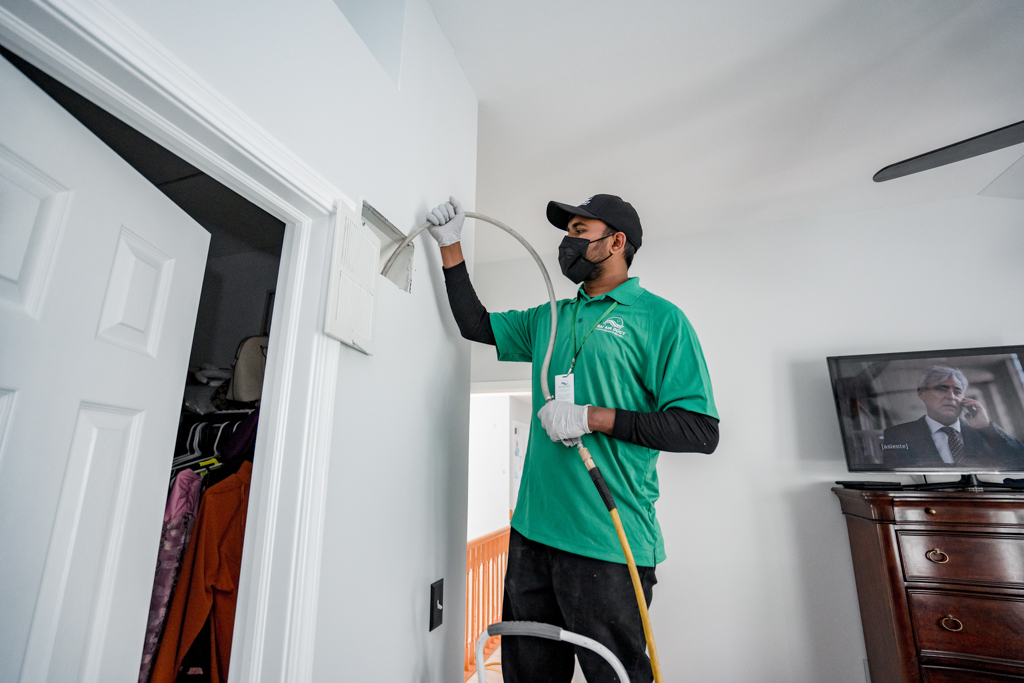Indoor air pollution has become a major concern in recent years as we spend more time indoors than ever before. The Environmental Protection Agency (EPA) estimates that the levels of indoor pollutants can be 2 to 5 times higher than outdoor levels, making indoor air quality a significant factor in our overall health. For those with allergies and respiratory issues, this problem is even more pronounced. However, one simple solution to improving indoor air quality is often overlooked is cleaning the air ducts. In this article, we will explore the impact of air duct cleaning on allergies and respiratory health:
1. Understanding Allergies and Respiratory Issues
Before delving into the benefits of cleaning, it is essential to have a basic understanding of allergies and respiratory issues. Allergies are caused by an overreaction of the immune system to substances that are typically harmless, such as pet dander. When these substances enter the body through inhalation or contact with the skin, they trigger a reaction that can result in symptoms like sneezing, coughing, itching, and congestion.
Respiratory issues are conditions that affect our ability to breathe properly, such as asthma, chronic obstructive pulmonary disease (COPD), and bronchitis. These conditions can be triggered or worsened by environmental factors, including poor indoor air quality.
2. The Link Between Air Ducts and Allergies/Respiratory Issues
Many people are surprised to learn that their HVAC system plays a significant role in indoor air quality and can contribute to allergies and respiratory issues. This is because the air ducts in our homes act as a pathway for air to circulate throughout the house. As a result, any contaminants present in the ducts will also be circulated, affecting the overall indoor air quality.
Over time, dust, debris, pet hair, and other allergens can build up in the air ducts, creating a breeding space for bacteria, mold, and dust mites. As the HVAC system runs, these contaminants are then pushed into the air we breathe. For those with allergies or respiratory issues, this can be particularly problematic.
3. The Benefits of Duct Cleaning
Now that we understand the link between air ducts and allergies/respiratory issues let’s explore how this cleaning can benefit us:
a. Improved Indoor Air Quality
The most obvious benefit of this cleaning is improved indoor air quality. By removing accumulations of dust and allergens from your HVAC system, you can significantly reduce the number of pollutants in the air. This is especially beneficial for those with allergies and respiratory issues, as it can alleviate symptoms and improve overall health.
b. Removal of Mold and Bacteria
Air ducts are an ideal environment for mold and bacteria to thrive due to the dark, damp conditions. As these contaminants grow, they release spores into the air, which can trigger allergies or cause respiratory problems. Regular cleaning helps to remove any mold or bacteria present, preventing it from spreading throughout your home.
c. Energy Savings
When dust and debris build up in your air ducts, they prevent proper airflow through the HVAC system, causing it to work harder to heat or cool your home. This can lead to higher energy bills and even cause your system to break down more frequently. By keeping your air ducts clean, you can ensure that your HVAC system is running efficiently, saving you money in the long run.
d. Extended Lifespan of Your HVAC System
A well-maintained HVAC system can last up to 15 years or more, but neglecting regular maintenance, including duct cleaning, can significantly decrease its lifespan. When dust and debris build-up in the system, it puts unnecessary strain on the components, causing them to wear out faster.
4. When to Consider Duct Cleaning
Now that we know the benefits of duct cleaning, how do we know when it’s time to have our air ducts cleaned? Here are a few signs to look out for:
- Visible mold growth in or around your air vents.
- Excessive amounts of dust and debris come from your vents.
- Strong, musty odors come from your HVAC system.
- Recent renovations may have caused an increase in dust and debris.
If you notice any of these signs, it’s essential to schedule a duct cleaning as soon as possible.
5. DIY vs Professional Cleaning
While there are some DIY methods for cleaning air ducts, it’s always best to hire a professional for this task. Professional HVAC technicians have the necessary training, equipment, and expertise to thoroughly clean your air ducts and ensure that your system is functioning correctly.
6. Maintaining Indoor Air Quality
This cleaning is not a one-time solution; it should be part of your regular home maintenance routine. Along with regular cleaning, here are some other ways to maintain good indoor air quality:
- Change your air filters regularly.
- Keep surfaces clean and dust-free.
- Avoid smoking indoors.
- Use an air purifier.
- Properly ventilate areas prone to moisture (e.g., bathroom, kitchen).
- Regularly clean carpets and upholstery.
By following these tips, you can ensure that the air circulating in your home is clean and healthy for you and your family.
This process may seem like a small detail in maintaining a healthy home, but its impact on allergies and respiratory health should not be overlooked. By investing in regular air duct cleaning, we can improve indoor air quality, prevent mold and bacteria growth, save energy, and extend the lifespan of our HVAC systems.
For more details on air duct cleaning, contact the expert team at Sai Air Duct at 224-256-0071.

